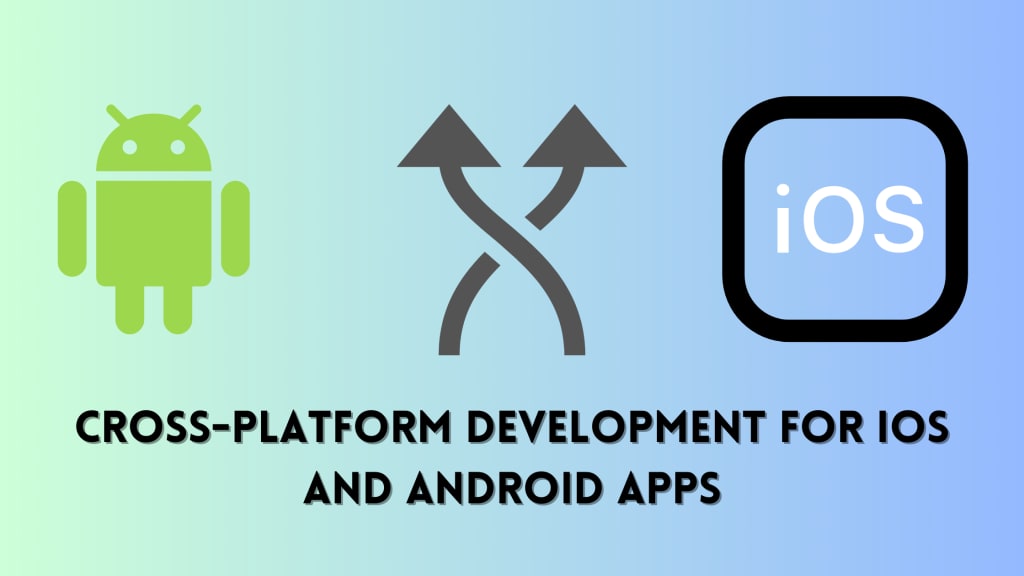Cross-Platform Development for iOS and Android Apps
Striking the Balance

The ongoing rivalry between iOS and Android apps casts a substantial shadow over the world of mobile app development. While users may feel the constraints of their device's operating system when it comes to app compatibility, the decisions facing app owners and development teams are far from trivial.
Developers craft mobile apps with a keen eye on the smartphone's operating system, a choice that fundamentally defines the tools, programming languages, and integrated development environments (IDEs) they employ. In this landscape, cross-platform development emerges as a balanced solution for those seeking to create apps for both Android and iOS. The alternative—separate codebases for each platform—can impose a significant drag on the development process.
It's challenging to definitively declare whether cross-platform development stands as the "best" approach for all cases. The suitability of this method hinges on various factors, including the specific requirements of your app, the complexity of its features, performance criteria, and the skillset of your development team.
Stats on iOS and Android Apps
Before diving deeper into cross-platform development, it's essential to grasp the context provided by the statistics on iOS and Android apps. These two mobile platforms dominate the mobile application market, with a combined market share that encompasses nearly all users. According to Statista, Android commands the lion's share with a 71.8% market dominance, while iOS holds a respectable 27.6%. However, raw market share percentages don't reveal the full story.
iOS-based applications, despite their smaller user base, prove twice as profitable as their Android counterparts. In 2022, iOS apps generated an astounding $86.8 billion in revenue, overshadowing Android's $42.3 billion. While iOS may host fewer users, it presents a more lucrative market for software products. When choosing a platform to focus on, it's imperative to align your decision with your business goals and target audience. The choice of the right platform can save you from pondering questions like "How to get Android apps for iPhone?".
How to Make an App for Both iOS and Android
Developing apps for iOS and Android doesn't dramatically deviate from the standard app-building process. A typical development team comprises developers, quality assurance (QA) professionals, UI/UX designers, and more. The distinction arises in selecting the best tools for mobile app development.
When embarking on this journey, you encounter a wealth of choices among mobile app frameworks, each with its strengths and suitability:
React Native: Developed by Facebook, React Native is celebrated for delivering near-native performance on both iOS and Android platforms. It utilizes JavaScript and offers an accessible route to creating cross-platform apps. The framework's code-sharing feature facilitates code reuse across platforms, rendering it a popular choice among businesses. React Native further benefits from a thriving community of developers, continuously enhancing the framework. The inclusion of a hot-reloading feature expedites the development process.
Flutter: Google's Flutter framework stands out for its customizable user interface and swift development cycle. Employing the Dart programming language, Flutter simplifies app development for iOS and Android. The framework's hot-reloading feature permits real-time visualization of interface changes, while its widget library offers a treasure trove of pre-built UI components, streamlining custom interface creation.
Ionic: For those comfortable with web technologies such as HTML, CSS, and JavaScript, Ionic presents an enticing option. This framework facilitates the development of cross-platform apps by providing an array of pre-built UI components. It shares its codebase between platforms and harnesses the power of Angular, a widely adopted web development framework, making it a natural choice for web developers transitioning to mobile platforms.
Xamarin: Owned by Microsoft, Xamarin ensures native performance on both iOS and Android. Developers compose code in C#, and the framework's cross-platform development feature facilitates code sharing between platforms. Xamarin also boasts a vast library of pre-built UI components, significantly accelerating the development process.
What is Cross-Platform Development?
In the realm of mobile app development, the spectrum of development options includes three primary categories: native apps, hybrid applications, and Progressive Web Apps (PWAs).
Native apps are tailored to a specific OS, typically designed for either iOS or Android. Native development employs platform-specific languages, such as Swift or Objective-C for iOS and Kotlin or Java for Android.
Hybrid applications merge web technologies like HTML, CSS, and JavaScript with a "native shell." Developers write core functionality using these web technologies, encapsulating the code within a native application. While hybrid development allows for both iOS and Android app creation, it demands strong coding skills and may entail trade-offs in UI design and performance. However, it's often a cost-effective choice.
Progressive Web Apps (PWAs) are essentially web pages transformed into mobile apps. They are compatible with multiple platforms and can operate offline. While cost-effective and versatile, PWAs may exhibit limitations in core functionality on different OS and pose security risks.
An invaluable addition to this list is cross-platform mobile applications, designed to create a single app for use on both Android and iOS platforms.
Benefits of Cross-Platform (Mobile) Frameworks
Cross-platform development, powered by mobile frameworks, offers substantial advantages. In a fast-paced economy, where efficiency is paramount, these benefits hold immense value:
Reduced Development Costs and Time: Developing a single app for all platforms translates to faster development and market entry. The elimination of separate iOS and Android development efforts results in fewer developer hours expended and a more cost-effective endeavor.
Reusable Code: Cross-platform development tools empower code sharing across platforms, simplifying the entire development process. This reuse enhances efficiency and consistency.
Better Target Audience Reach: While native development is renowned for providing a smooth user experience, cross-platform development transcends platform boundaries. It offers exposure to a global audience without the limitations imposed by specific platforms.
Every solution in app development comes with its own set of drawbacks. Cross-platform mobile frameworks are no exception. Challenges may include less reusable UI/UX designs and dependency on third-party software, limiting choices.
Quick Overview
The path to developing a successful app for both iOS and Android isn't straightforward. Success requires a comprehensive analysis of your industry, competitors, available development tools, and development companies. Consulting with tech managers, CTOs, or app design professionals can provide valuable insights. Regardless of your choice in mobile app development or the selection of the best mobile app frameworks, or collarate with a Mobile App Development Company
About the Creator
Swarnalata Shetty
Hello, I'm Swarnalata Shetty, a Business Development Executive at Zethic. With over 3 years of experience, I'm passionate about forging connections and driving growth. Zethic, based in Bangalore, pioneers in Mobile Apps Development.






Comments (1)
Very interesting! Great work!